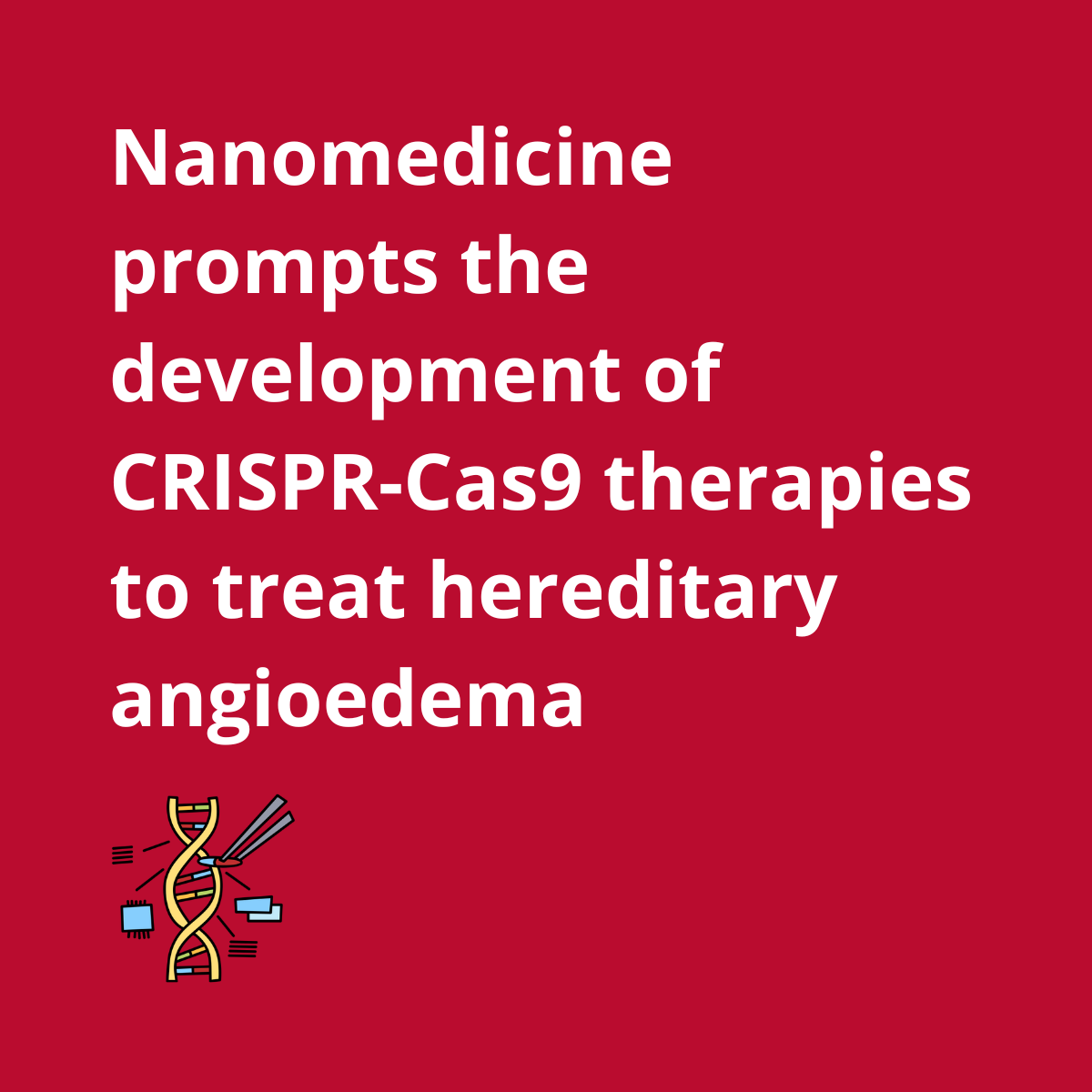The potential of non-viral lipid delivery systems for improving global health has been proven once again. From rare diseases to cancer, gene editing and gene therapies will undoubtedly benefit from the latest advances in nanomedicine.
In February 2024, the results from a promising combined phase 1–2 clinical trial were released. They revealed a positive outcome in treating hereditary angioedema in vivo using CRISPR-Cas9 delivered via lipid nanoparticles. Two reasons make this news highly appealing. Firstly, it is an in vivo therapy, unlike the already approved Casgevy, which involves ex vivo genetic modification of cells. Secondly, nanotechnology plays a fundamental role in this therapy.
NTLA-2002, delivering gene editing machinery using lipid nanoparticles
Hereditary angioedema (HAE) is a rare genetic disorder characterized by recurrent episodes of swelling (angioedema), typically affecting the skin, mucous membranes, and sometimes the internal organs. HAE patients show an overproduction of bradykinin, a potent vasodilator, leading to swelling symptoms.
NTLA-2002, the therapy designed by Intellia Therapeutics, knocks out the target gene kallikrein B1 (KLKB1) in hepatocytes, reducing plasma kallikrein activity, which in turn does not activate bradykinin.
In a single dose, the CRISPR/Cas9 gene editing system is delivered by lipid nanoparticles for intravenous (IV) administration. Current treatment options often include life-long therapies, which may require chronic IV or subcutaneous (SC) administration as often as twice per week or daily oral administration.
The clinical data from the Phase 1 dose-escalation portion of the clinical trial, involving 10 patients, revealed robust, dose-dependent, and long-lasting reductions in total plasma kallikrein levels and no major safety concerns.
Non-viral lipid nanosystems are essential for gene therapy
These astonishing advancements in biomedicine come hand in hand with the progress in nanotechnology.
In NTLA-2002, CRISPR/Cas9 is delivered using lipid nanoparticles, using a technique known as Selective Organ Targeting (SORT). They use a specific composition to deliver CRISPR components directly to the liver, assuring effective tissue targeting in vivo.
For in vivo IV administration, nanoparticles protect the editing machinery from degradation and grant enough circulation time to reach the target tissue. They also facilitate the crossing of lipid bilayers. Besides, this targeted delivery is possible because nanoparticles are easily tunable to include proteins and ligands in their composition.
As stated in an interesting recently published review reflecting on the role of nanomedicine in CRISPR-Cas9 genome editing, nanoparticles offer precise targeting, scalability, modification efficiency, low potential for immune response, and reduced susceptibility to nucleases. Moreover, they are easy to manipulate, biocompatible, and show a high payload capacity, turning them into the most prevalent class of FDA-approved nanomedicine. Importantly, nanomedicine is a fundamental tool for developing gene therapies that look for an in vivo approach.
DIVERSA speeds up your research
DIVERSA’s commitment to developing innovative delivery solutions for the scientific community has led to innovative lipid nanosystems to deliver different types of molecules, including mRNA and CRISPR-Cas9.
Currently, DIVERSA is focusing on developing new gene nanomedicines for rare diseases and cancer, aiming to advance the field and address current unmet clinical needs.
Furthermore, we support companies that have discovered new drugs and molecules but require a delivery system for translation and clinical development.
Moreover, DIVERSA aims to democratize the use of its lipid nanoparticle technology by commercializing ready-to-go lipid nanoparticle reagents for delivering different types of molecules. Specifically, we are soon launching an mRNA Delivery Nanoparticle Reagent.
A significant advantage of DIVERSA’s lipid nanoparticle reagent over competitors, aside from its efficient composition, is that it does not require specialized equipment for production. This minimizes material loss and ensures maximum research value. Additionally, it enables quick intracellular delivery in various cell types, expediting experiments for faster results. Furthermore, our solution offers traceability through an optional fluorescent tag and customization with proteins and ligands for targeted delivery.
Would you like to know how DIVERSA’s nanoparticles can help your research? Send us an email at info@diversatechnologies.com. Our experts will be glad to guide you.
Benefit from our experience and know-how to speed up your research!

